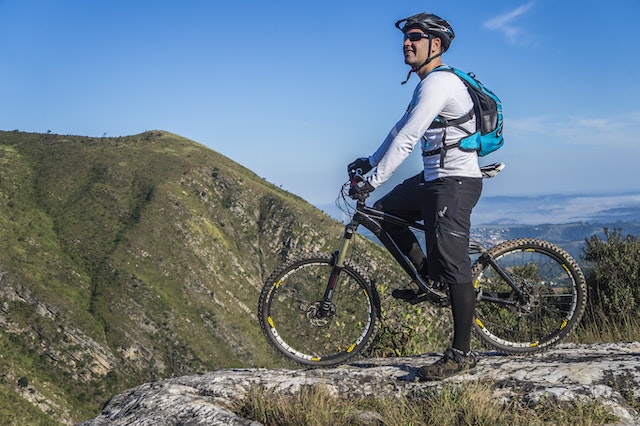
Introduction
Cycling is a physically demanding sport that requires endurance, strength, and flexibility. While focusing on training rides and conditioning exercises is crucial, incorporating yoga into your cycling routine can provide numerous benefits. Yoga can improve your performance, prevent injuries, and promote recovery. In this article, we will explore the benefits of yoga for cyclists, specific poses that target key muscles used in cycling, and valuable tips for integrating yoga seamlessly into your training regimen.
Benefits of Yoga for Cyclists

Cycling primarily engages the lower body, placing stress on the legs, hips, and lower back. Yoga offers several advantages that can complement and enhance your cycling performance:
1. Improved Flexibility and Range of Motion
Yoga poses work to stretch and lengthen the muscles, improving overall flexibility and range of motion. This increased flexibility can translate into a more efficient pedal stroke and a reduced risk of overuse injuries.
2. Enhanced Core Strength and Stability
A strong core is essential for maintaining proper cycling form and power transfer through the body. Yoga poses like Boat Pose, Plank Pose, and Side Plank can help develop core strength and stability, improving your ability to generate power and maintain control on the bike.
3. Increased Balance and Body Awareness
Cycling requires balance, especially when navigating challenging terrain or during high-speed descents. Yoga helps improve balance through various standing poses, such as Tree Pose and Warrior III, enhancing your stability and control on the bike.
4. Improved Breathing and Mindfulness
Yoga emphasizes deep breathing techniques, which can enhance your lung capacity and oxygen intake during intense cycling efforts. The practice of mindfulness and focused breathing can also help you stay mentally calm and focused during long rides or races.
Specific Yoga Poses for Cyclists
Certain yoga poses target the muscles and areas of the body most used and stressed during cycling. Incorporating these poses into your routine can help improve strength, flexibility, and recovery. Here are a few poses that are particularly beneficial for cyclists:
1. Downward-Facing Dog
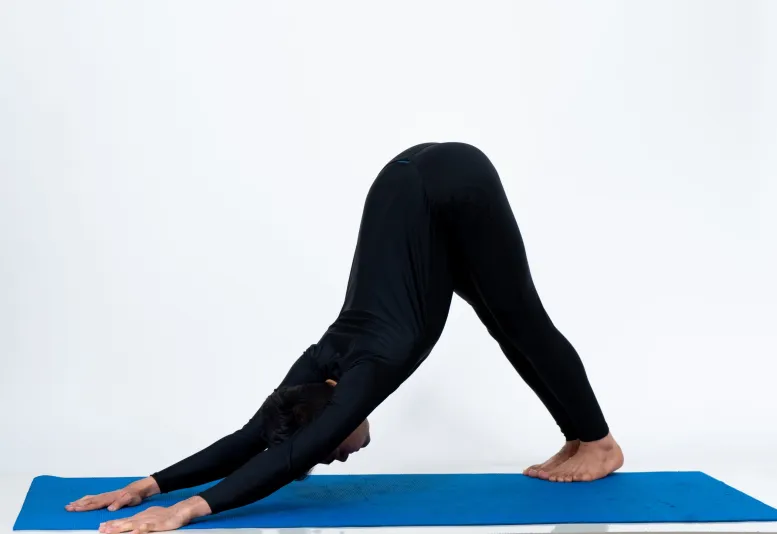
Downward-Facing Dog is a foundational pose that stretches the hamstrings, calves, and shoulders. It helps alleviate tightness in the posterior chain and promotes overall flexibility.
2. Pigeon Pose
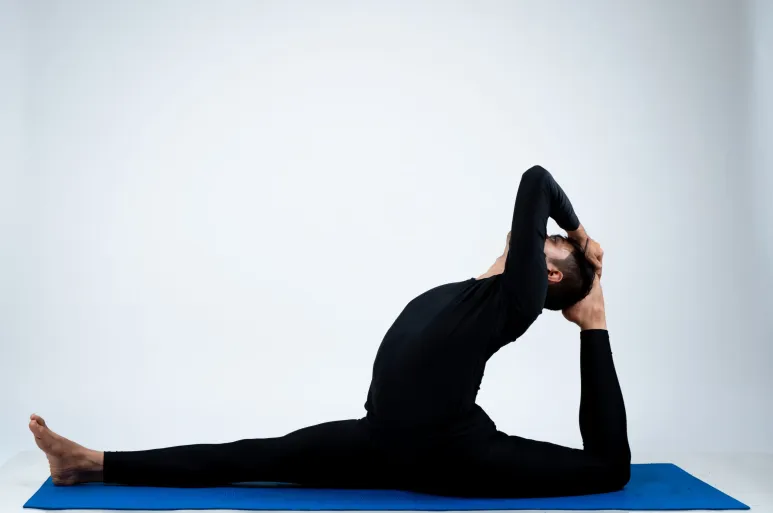
Pigeon Pose is excellent for releasing tension in the hips, glutes, and lower back. It helps counteract the hip flexor tightness that can result from spending extended periods in a cycling position.
3. Warrior II
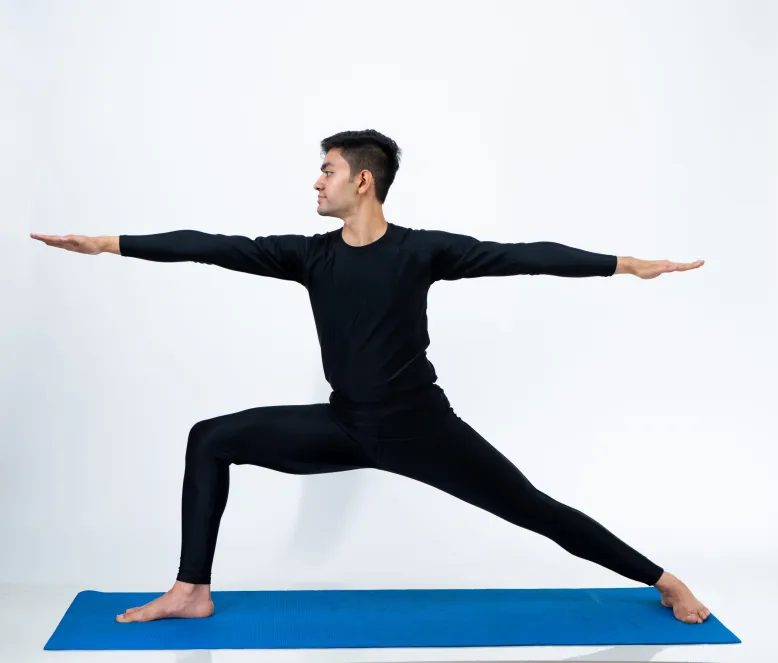
Warrior II pose strengthens the legs, opens the hips, and stretches the inner thighs. It helps develop endurance in the lower body and improves stability during cycling movements.
4. Bridge Pose
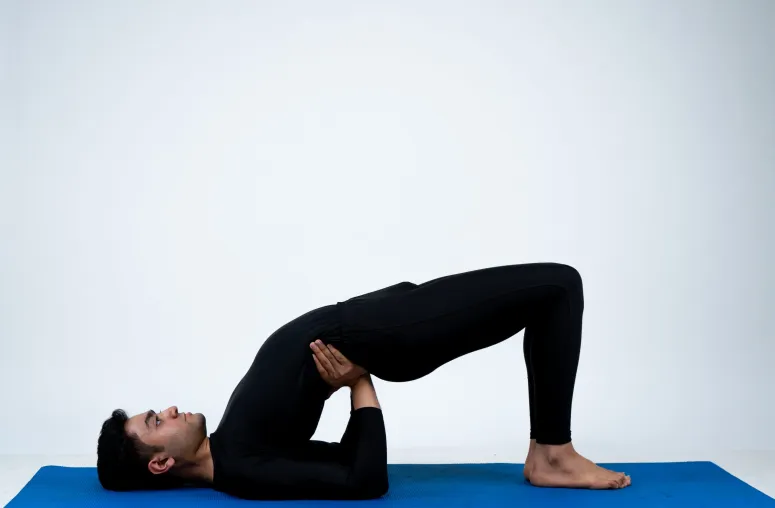
Bridge Pose targets the glutes, hamstrings, and lower back. It strengthens these muscles, promoting a stable and powerful pedal stroke.
5. Sphinx Pose
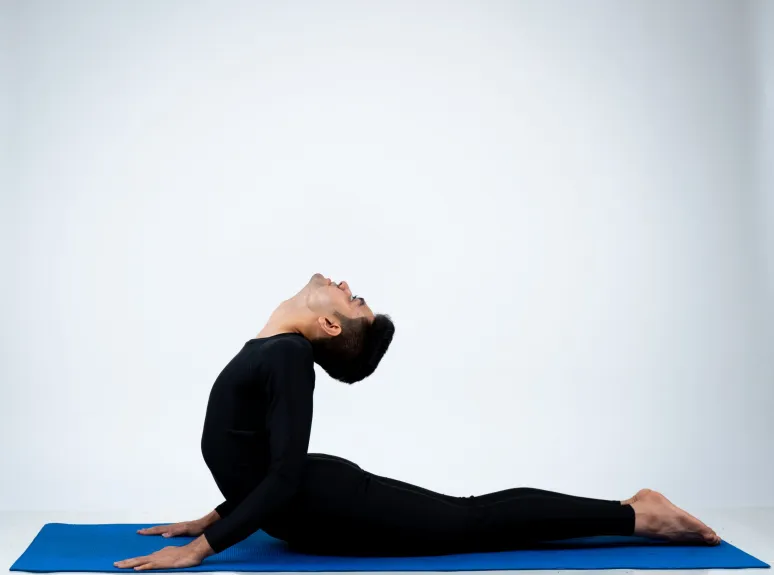
Sphinx Pose is beneficial for stretching the lower back and opening up the chest. It can help alleviate any discomfort or tightness resulting from a forward-leaning cycling position.
Tips for Integrating Yoga into Your Cycling Routine
To fully experience the benefits of yoga as a cyclist, it’s essential to integrate it effectively into your training regimen. Here are some tips to help you incorporate yoga seamlessly into your cycling routine:
1. Schedule Regular Yoga Sessions
Make yoga a regular part of your training schedule. Aim for at least two to three dedicated yoga sessions per week. Consistency is key to experiencing the full benefits of the practice.
2. Pre-ride and Post-ride Yoga
Perform a short yoga sequence before and after your cycling sessions. Pre-ride yoga can help warm up your muscles, increase blood flow, and mentally prepare you for the ride. Post-ride yoga can aid in recovery, promote muscle relaxation, and reduce stiffness.
3. Focus on Key Areas
Pay particular attention to stretching and strengthening the key areas used in cycling, such as the hips, hamstrings, quadriceps, glutes, and lower back. Choose yoga poses that target these muscle groups for maximum benefit.
4. Listen to Your Body
Respect your body’s limitations and listen to any signs of discomfort or pain. Modify poses as needed to suit your level of flexibility and avoid pushing yourself too far, especially if you are new to yoga.
5. Seek Professional Guidance
Consider taking yoga classes specifically designed for cyclists or consulting with a certified yoga instructor who understands the needs of cyclists. They can guide you through appropriate poses and sequences tailored to your cycling goals.
Breathing Techniques for Cyclists
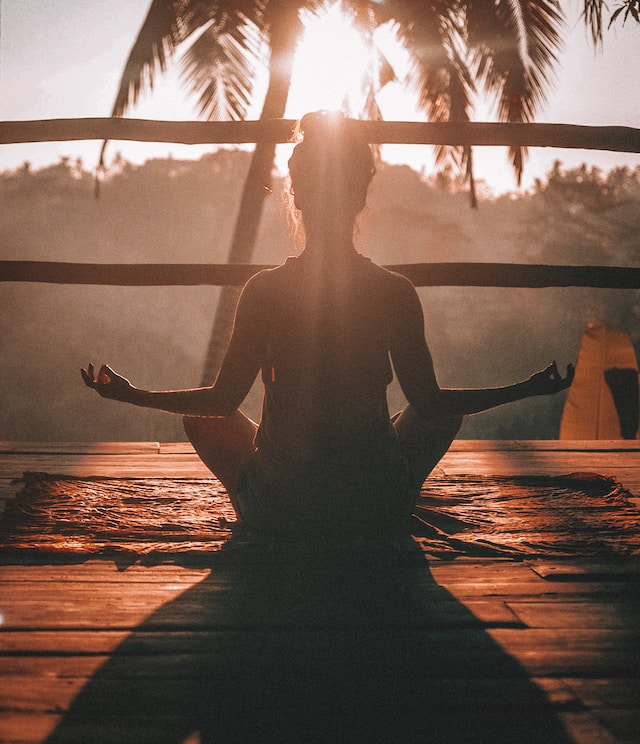
In addition to physical poses, incorporating specific breathing techniques into your cycling routine can further enhance your performance and overall well-being. Proper breathing techniques can help you maintain focus, manage exertion levels, and stay calm during challenging rides. Here are a few breathing techniques to consider:
1. Diaphragmatic Breathing
Diaphragmatic breathing, also known as belly breathing, involves deep inhalations and exhalations that engage the diaphragm. This technique helps increase oxygen intake, reduces shallow breathing, and promotes a relaxed state of mind. Practice diaphragmatic breathing during your warm-up, cool-down, and when you need to calm your breathing during intense climbs or sprints.
2. Box Breathing
Box breathing is a technique that involves inhaling, holding the breath, exhaling, and holding the breath again, each for an equal count of seconds. This method helps regulate breathing patterns, enhances focus, and promotes mental clarity. Implement box breathing during moments when you need to find composure, such as before a race or when facing a challenging cycling segment.
3. Ujjayi Breath
Ujjayi breath, also known as victorious breath, is a technique that involves breathing in and out through the nose with a slight constriction in the back of the throat. This produces a gentle, audible sound and helps to regulate the breath, enhance concentration, and create a sense of calmness. Incorporate Ujjayi breath during your yoga sessions and integrate it into your cycling practice to maintain a steady and controlled breathing rhythm.
Tips for Recovery and Injury Prevention
Recovery and injury prevention are crucial aspects of any cyclist’s training routine. Yoga can play a significant role in facilitating both aspects. Here are some tips for integrating yoga into your recovery and injury prevention practices:
1. Restorative Yoga
Incorporate restorative yoga into your recovery days or after intense training sessions. Restorative poses, such as Legs-Up-The-Wall pose and Savasana (Corpse Pose), help promote relaxation, reduce muscle tension, and enhance overall recovery.
2. Yoga for Flexibility and Mobility
Maintaining flexibility and mobility is essential for preventing injuries and ensuring optimal performance. Regularly include yoga poses that target the major muscle groups used in cycling, such as the hips, hamstrings, and quadriceps. Poses like the Standing Forward Bend and Reclining Hand-to-Big-Toe pose can aid in stretching and lengthening these muscles.
3. Focus on Balance and Stability
Cycling requires balance and stability, especially when maneuvering through technical terrains or performing explosive movements. Yoga poses that challenge balance, such as the Tree Pose and the Eagle Pose, can help improve proprioception and enhance stability on the bike.
4. Listen to Your Body
While yoga can offer numerous benefits, it’s important to listen to your body and make modifications or skip certain poses if you experience pain or discomfort. Consult with a yoga instructor or physical therapist if you have any concerns or pre-existing conditions.
5. Combine Yoga with Other Recovery Practices
Yoga can be combined with other recovery practices, such as foam rolling, stretching, and massage therapy, to optimize your recovery process. Experiment with different recovery modalities and find the combination that works best for you.
Mindfulness and Mental Strategies for Cyclists

Cycling is not only a physical endeavor but also a mental one. The ability to stay focused, maintain a positive mindset, and overcome challenges can significantly impact your performance on the bike. Incorporating mindfulness techniques and mental strategies from yoga can help you develop mental resilience and optimize your cycling experience. Here are some mindfulness and mental strategies to consider:
1. Meditation
Meditation is a practice that cultivates mindfulness and inner awareness. Dedicate a few minutes each day to meditation, focusing on your breath or a specific mantra. This practice can help calm the mind, reduce stress, and improve mental clarity both on and off the bike.
2. Visualization
Visualization involves creating vivid mental images of successfully navigating challenging cycling situations, such as conquering a difficult climb or sprinting to the finish line. By visualizing success, you train your mind to believe in your abilities, increasing confidence and performance.
3. Positive Affirmations
Positive affirmations are powerful statements that you repeat to yourself to cultivate a positive mindset. Create affirmations that resonate with your cycling goals, such as “I am strong and resilient,” or “I can overcome any challenge.” Repeat these affirmations during your rides or before races to boost confidence and motivation.
4. Focus on the Present Moment
During your rides, focus on the present moment by paying attention to your breath, the sensation of the wind on your face, or the rhythmic motion of your legs. By grounding yourself in the present, you can enhance focus, minimize distractions, and fully immerse yourself in the joy of cycling.
5. Gratitude Practice
Practicing gratitude involves acknowledging and appreciating the positive aspects of your cycling journey. Before or after each ride, take a moment to reflect on what you are grateful for, whether it’s the beautiful scenery, the support of fellow cyclists, or the strength and health to pursue your passion. This practice can shift your perspective, foster positivity, and enhance overall enjoyment.
Integrating Yoga into Your Training Plan
Now that you understand the benefits and various aspects of yoga for cyclists, it’s time to integrate it into your training plan effectively. Here are some practical tips for incorporating yoga seamlessly into your cycling routine:
1. Create a Yoga Schedule
Plan your yoga sessions ahead of time and incorporate them into your training schedule. Treat them as important training sessions and allocate dedicated time for yoga practice.
2. Combine Yoga with Cross-Training
Consider adding yoga sessions on days when you have light or active recovery rides. This allows you to engage in cross-training while still reaping the benefits of yoga.
3. Customize Your Yoga Routine
Tailor your yoga routine to address your specific needs as a cyclist. Focus on poses that target areas prone to tightness or weakness, such as the hips, lower back, and shoulders.
4. Attend Yoga Classes or Use Online Resources
If you’re new to yoga or need guidance, consider attending yoga classes specifically designed for cyclists or utilizing online resources. Qualified instructors can help you learn proper alignment, offer modifications, and provide expert guidance.
5. Be Consistent and Patient
Like cycling, progress in yoga takes time and consistency. Be patient with yourself and embrace the process. With regular practice, you will gradually experience improvements in your flexibility, strength, and mental focus.
Incorporating yoga into your cycling routine is a journey that offers tremendous benefits for your physical and mental well-being. Embrace the opportunity to deepen your connection with your body, enhance your performance, and find balance both on and off the bike.
Conclusion
Integrating yoga into your cycling routine can be a game-changer, enhancing your performance, flexibility, mental focus, and overall well-being. By practicing specific yoga poses, incorporating breathing techniques, and prioritizing recovery and injury prevention, you can become a stronger, more balanced cyclist. Embrace the synergy between yoga and cycling, and enjoy the transformative benefits it brings to your cycling journey.
FAQs
1. Can yoga replace strength training for cyclists?
While yoga offers strength-building benefits, it is not a complete substitute for specific strength training exercises. It is beneficial to combine yoga with targeted strength training to achieve optimal results.
2. Is it necessary to practice yoga if I already stretch before and after rides?
While stretching before and after rides is beneficial, yoga offers a more comprehensive approach that combines stretching, strengthening, and mindfulness. It can provide additional benefits beyond simple stretching routines.
3. Can yoga improve my posture on the bike?
Yes, yoga can improve your posture by increasing body awareness, strengthening core muscles, and promoting proper alignment. These benefits can translate into better posture and reduced strain while cycling.
4. How long should a yoga session be for cyclists?
The duration of a yoga session can vary depending on your schedule and needs. Aim for at least 20-30 minutes, but even shorter sessions can be beneficial if done consistently.
5. Can yoga help me recover from long-distance rides or races?
Yes, yoga can aid in post-ride recovery by promoting muscle relaxation, reducing stiffness, and enhancing overall circulation. It can help alleviate soreness and promote faster recovery after long-distance rides or races.
6. Can yoga help prevent cycling-related injuries?
Yes, yoga can help prevent cycling-related injuries by improving flexibility, strengthening key muscles, and enhancing overall body awareness and stability.
7. How often should I practice yoga as a cyclist?
Aim for two to three yoga sessions per week to experience the benefits. However, even a shorter yoga routine before and after each ride can be beneficial.
8. Can yoga improve my cycling performance?
Yes, yoga can improve your cycling performance by increasing flexibility, strength, balance, and mental focus. It can enhance your efficiency, power, and endurance on the bike.
9. Are there any yoga poses I should avoid as a cyclist?
Some poses that require extreme flexibility or put excessive strain on the knees or back may be best to avoid if you have any pre-existing conditions or limitations. Consult with a yoga instructor to modify or choose alternative poses.
10. Can yoga help with recovery after intense cycling workouts or races?
Yes, post-ride yoga can aid in muscle recovery, promote relaxation, reduce stiffness, and improve overall circulation after intense cycling efforts.
